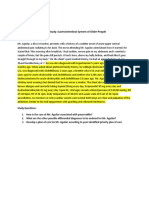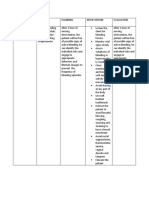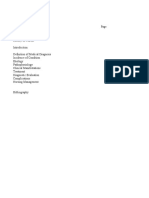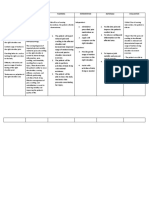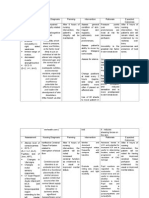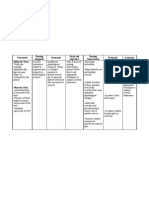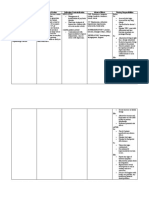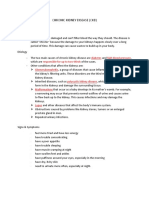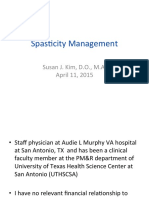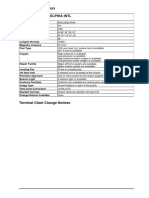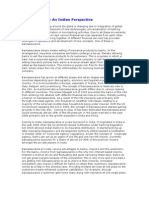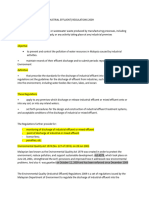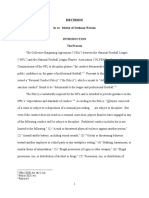PRIORITIZATION OF PROBLEMS
ACTIVITY
AIRWAY
AND BREATHING
CIRCULATION
CLUSTERED NURSING DIAGNOSIS
POTENTIAL/
ACTUAL
Actual
PRIORITY
LEVEL
High
Ineffective airway clearance related retained
secretions in the bronchial tree
Ineffective breathing patterns related to
Impaired oral mucous membrane related to mouthbreathing, absence of pharyngeal reflex, and altered
fluid intake
Actual
High
Impaired physical mobility related to related to left
sided body weakness ischemic stroke
Impaired bed mobility related to left sided body
weakness ischemic stroke
Activity intolerance to left sided body weakness
ischemic stroke
Self-care deficits (bathing, hygiene, toileting, dressing,
grooming, and feeding) related to left sided body
weakness secondary to ischemic stroke
Actual
High
Ineffective tissue perfusion (cerebral) related to
interruption of blood fow
Ineffective peripheral tissue perfussion related to
increase vascular resistance
Disturbed sensory perception related to interruption
of blood flow in the brain
JUSTIFICATION
This is highly prioritized because according to American Heart
Association, the basis for prioritizinbg problems in any patient with
trauma is now CAB. In the case of my patient, she was been
diagnosed with Ischemic Stroke which also means she has a trauma
in the brain and so problems pertaining to circulations must be
addressed first. Actual signs and symptoms manifested by the
patient that she has ineffective tissue perfusion in cerebral and
peripheral tissues are. Disturbed sensory percetion was brought
about by blockage of blood flow in the brain which lead patient to
be manifesting left sided affectation of senses such as unequally
reactive pupils and decreases sensory perception in the left. These
problems should be addressed to prevent further complications
such as too long deprivation of oxygen in brain tissues may lead to
death.
The problems too are highly prioritized next to circulation which is
maintaining patency of airway and regularity of breathing
according to CAB prioritization for patients with trauma. The
patient has thses actual problems since the patient has retained
secretions in the bronchial tree and this was assessed with the
presence of the ET wherein there is vibrations of secretions heard
on the during inspiration and also,there is moderate secretions
upon suctioning ET. The patient has abnormal respiration rate since
the patient is in continous ambo bagging. Abnormal respirations
may be brought about by accumulation of secretions in the lungs.
Impaired oral mucous membrane is also manifested since the
patients airway is not clear with secretions and due to the presence
of ET. These problems if not managed will lead to prolonged
retaining of the ET and support of the bag valve mask.
These problem is highly prioritized because according to Maslows
Heirarchy of needs, Activity is a basic need for every individual to
survive on their own. The patient has this actual problem in activity
because she has a left sided body weakness which prevented her to
do her ADLs such as bathing, exercise, toileting, grooming,dressing
and feeding. If these problem will not be attended the patient
�COMMUNICATION
Impaired verbal communication related to slerring of
speech and presence of ET.
Actual
High
These problem is highly prioritized because according to Maslows
Heirarchy of needs, verbal communication is a basic need for every
individual to verbalize her needs and concerns to other people.In
the case of my patient, she has slurring of speech and unable to
verbalize concerns to nurses. These problem is prioritized least
than the others because the patient had assymmetry of mouth and
toungue deviation brought about by his left sided paralysis and
these problem cannot be solved by nurses alone because it needs
collboration to physical therapy department.
NURISNG CARE PLAN
ASSESSMENT
Subjective:
Mataas lagi yong
nakukuhang BP nya as
verbalized by the significant
other.
Objective:
BP:
CR:
T:
2-3 seconds
capillary refill
left-sided weakness
unequally reactive
pupils
altered level of
consciousness
altered mental
status
spontaneous eye
opening
obeys sommand
decreased sensation
of left side of her
body
EXPLANATION OF THE
PROBLEM
Hypertension
Cigarette Smoking
Diabetes Meliitus
Atherosclerosis
Formation op plaque
deposits
Thrombosis
Occlusion by major vessel
Interruption of blood flow
Ischemic stroke
Decreased
GOALS AND OBJECTIVES
INTERVENTIONS
RATIONALE
EVALUATION
�Diagnostic Results:
CT SCAN: CVD
ischemic Right
occipito parietal
area with SAH
component
LIPID PROFILE:
Glucose: 6.40
mmol/L (high)
Triglycerides: 2.63
mmol/L (high)
Cholesterol:
7.40mmol/L (high)
LDL: 4.98 mmol/L
(high)
Nursing Diagnosis:
Ineffective
tissue
perfusion (cerebral)
related
to
interruption
of
blood fow
Ineffective
peripheral
tissue
perfussion related to
increase
vascular
resistance
Disturbed sensory
perception related to
interruption
of
blood flow in the
brain








